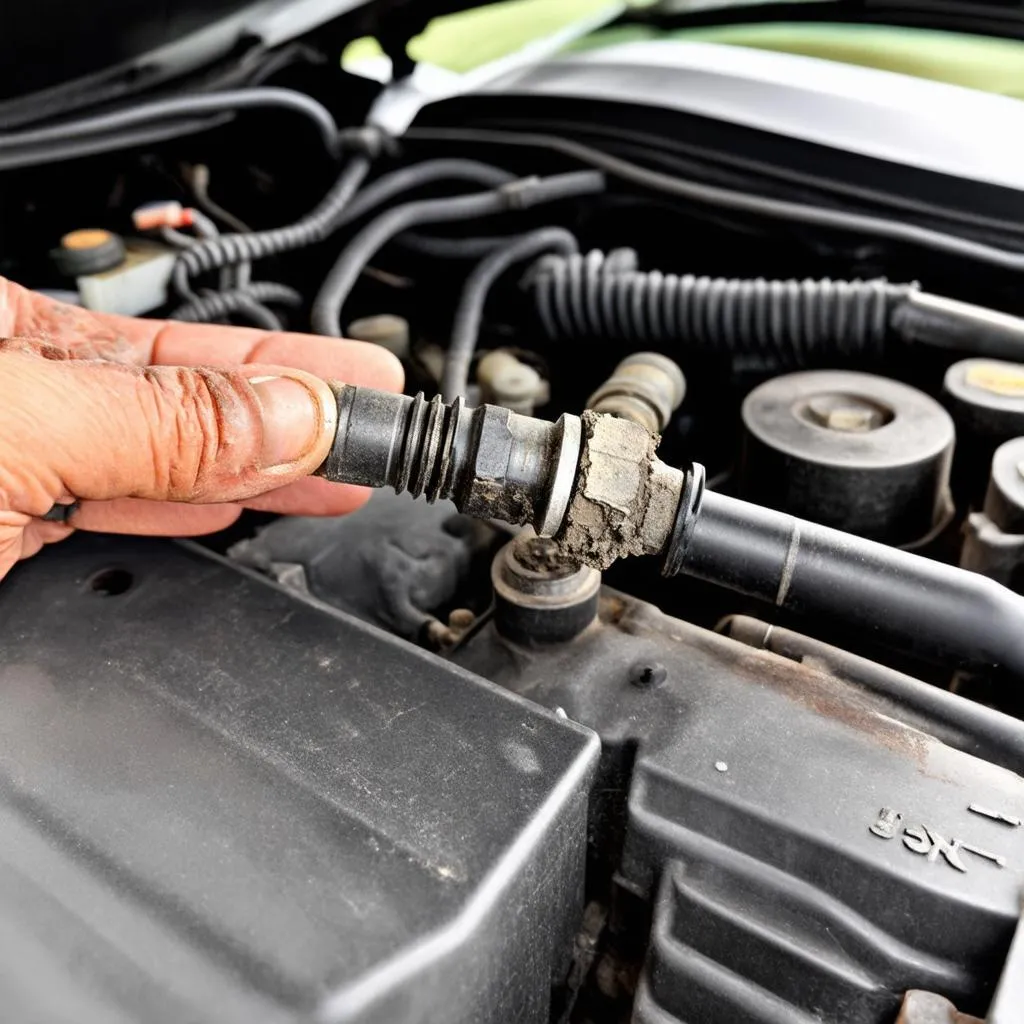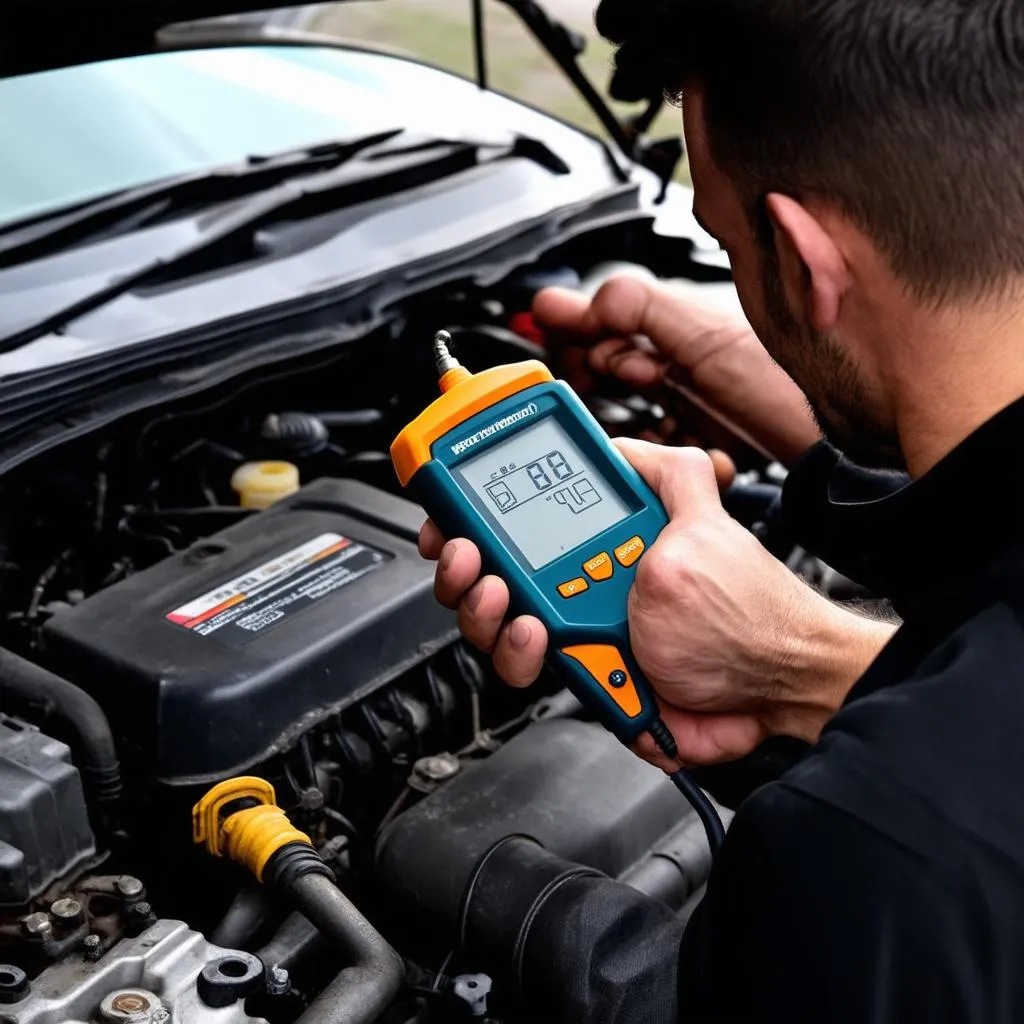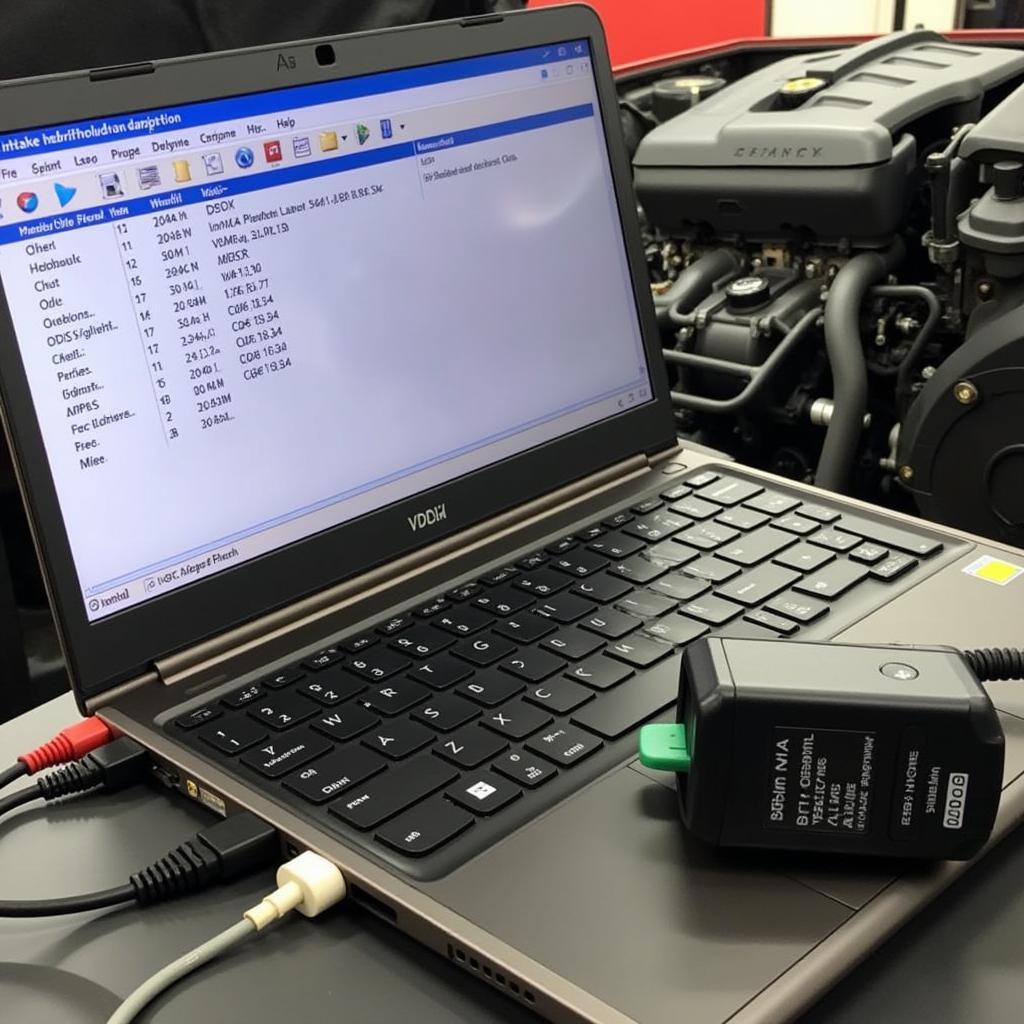As a car owner, encountering an error code on your dashboard can be unsettling. One such code you might encounter is VCDS error code 01305. This code specifically relates to the oxygen sensor (O2 sensor), a crucial component in your vehicle’s emissions system. This article will delve into the details of this error code, its causes, symptoms, diagnostic procedures, and potential solutions.
What Does VCDS Error Code 01305 Mean?
VCDS error code 01305 specifically points to a problem with the oxygen sensor circuit for Bank 1, Sensor 1. Here’s what that means:
- Bank 1: In vehicles with two engine banks (typically V6 or V8 engines), Bank 1 refers to the side of the engine that contains cylinder number one.
- Sensor 1: This designates the first oxygen sensor upstream of the catalytic converter on the specified engine bank. This sensor plays a vital role in measuring the oxygen content in the exhaust gases before they reach the catalytic converter.
The “01305” code itself typically indicates a malfunction in the electrical circuit of the oxygen sensor rather than a problem with the sensor itself. This could mean an issue with the wiring, connections, or the sensor’s heater circuit.
Symptoms of VCDS Error Code 01305
While the check engine light illuminating on your dashboard is a clear indicator, other symptoms might accompany VCDS error code 01305:
- Decreased Fuel Economy: A faulty oxygen sensor can disrupt the air-fuel mixture, leading to reduced fuel efficiency.
- Rough Engine Idle: The engine might experience rough idling due to the incorrect air-fuel ratio caused by the malfunctioning oxygen sensor.
- Failed Emissions Test: Your vehicle might fail an emissions test as a faulty oxygen sensor can lead to increased harmful emissions.
- Engine Hesitation or Stalling: In some cases, engine hesitation or stalling might occur due to the incorrect air-fuel mixture.
Common Causes of VCDS Error Code 01305
Several factors can contribute to the 01305 error code:
- Faulty Oxygen Sensor: The oxygen sensor itself might be worn out or damaged.
- Wiring Issues: Damaged, corroded, or loose wiring in the oxygen sensor circuit can disrupt the signal transmission.
- Faulty Oxygen Sensor Heater: The oxygen sensor has a heating element to help it reach operating temperature faster. A malfunctioning heater can trigger the error code.
- Vacuum Leaks: Leaks in the engine’s vacuum system can affect the oxygen sensor readings.
- Exhaust Leaks: Leaks in the exhaust system before the oxygen sensor can alter the exhaust gas composition, leading to inaccurate readings.
- Faulty Engine Control Unit (ECU): In rare cases, a problem with the ECU, which receives data from the oxygen sensor, might be the culprit.
Diagnosing VCDS Error Code 01305
Diagnosing this error code typically involves the following steps:
-
Read the Error Code: Use a compatible OBD-II scanner or VCDS tool to read the error code stored in your vehicle’s ECU.
-
Visually Inspect the Oxygen Sensor and Wiring: Check for any visible damage to the oxygen sensor or its wiring harness. Look for signs of burning, melting, or loose connections.
-
Check for Vacuum and Exhaust Leaks: Inspect the engine bay and exhaust system for any potential leaks.
-
Test the Oxygen Sensor Heater Circuit: Use a multimeter to test the resistance of the oxygen sensor heater circuit. Compare the readings with the manufacturer’s specifications.
-
Check for Proper Voltage and Ground: Use a multimeter to ensure the oxygen sensor is receiving the correct voltage and ground signals.
-
Inspect the Catalytic Converter: A clogged or failing catalytic converter can also trigger oxygen sensor codes.
How to Fix VCDS Error Code 01305
The solution to this error code depends on the underlying cause identified during diagnosis:
-
Replace the Oxygen Sensor: If the oxygen sensor is faulty, replacing it is often the most effective solution.
-
Repair Wiring Issues: Repair or replace any damaged, corroded, or loose wiring in the oxygen sensor circuit.
-
Address Vacuum and Exhaust Leaks: Repair any leaks in the engine’s vacuum system or exhaust system.
-
Replace the Oxygen Sensor Heater: If the heater circuit is faulty, replacing the oxygen sensor is typically necessary.
-
Consult a Qualified Mechanic: For complex issues or if you’re uncomfortable working on your vehicle’s electrical system, consult a qualified mechanic.
 Faulty Oxygen Sensor
Faulty Oxygen Sensor
Frequently Asked Questions
Q: Can I still drive my car with error code 01305?
A: While you might be able to drive for a short period, it’s not recommended. Driving with a faulty oxygen sensor can damage your catalytic converter, lead to decreased fuel economy, and potentially cause further engine problems.
Q: How much does it cost to replace an oxygen sensor?
A: The cost can vary depending on the make and model of your vehicle and labor costs. On average, you can expect to pay between $200 and $400 for parts and labor.
Q: How often should oxygen sensors be replaced?
A: Oxygen sensors have a limited lifespan and are typically recommended to be replaced every 60,000 to 90,000 miles as part of regular maintenance.
Important Considerations
-
Always refer to your vehicle’s specific repair manual for detailed instructions and safety precautions.
-
When replacing an oxygen sensor, make sure to use the correct part number for your vehicle’s make, model, and engine.
-
It’s recommended to use high-quality oxygen sensors from reputable brands to ensure proper performance and longevity.
 Mechanic Diagnosing Car
Mechanic Diagnosing Car
Contact Cardiagtech
For further assistance with car diagnostics or to explore a range of high-quality diagnostic tools, visit CARDIAGTECH at https://cardiagtech.com/. Our team of experts can help you find the right tools and resources for all your automotive diagnostic needs.

